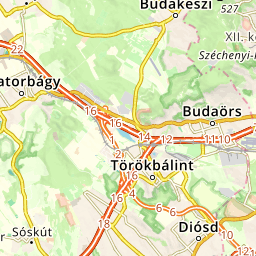Budapest University of Technology and Economics
The history of technical education in Hungary is closely related to that of the Technical University that dates back to the 18th century. The predecessor to the Technical University was the Institute of Engineering. It was founded in 1782 as part of Liberal Arts Faculty, University of Buda, first in Europe raising technical education to university rank.

In the early 19th century industrial development in Hungary required an educational background that the Institute could not provide. As a result, József College of Technology was established in 1846. Following the Revolution of 1848 the Institute of Engineering merged with the college in 1850 under the name Joseph Industrieschule teaching in German. This measure not only eliminated the Institute but engineering higher education in Hungary also for 20 years. In 1856, Industrieschule was renamed to Joseph Polytechnic and raised to a rank of higher education, as well as restoring Hungarian as the language of teaching in 1860. In 1870, a bill was introduced in the parliament to reorganize the Polytechnic.
After the reorganization Royal József Technical University opened in 1871 with three departments: general engineering, civil engineering and mechanical engineering. Departments of Architectural and Chemical Engineering started only in 1873 due to shortage of teachers and space. The university gained the right to confer a doctoral degree in 1901. The academic year of 1909 commenced in Lágymányos in buildings by Győző Czigler, Alajos Hauszmann and Samu Pecz.

In 1934, due to financial difficulties the government established Palatine Joseph University of Technology and Economics merging József Technical University, Sopron College of Mining and Forest Engineering, the College of Veterinary Medicine and University Faculty of Economics. Containing nearly 100 departments the Technical University had become the largest institute of higher education of the country. The devastation of WW2 caused serious damage to the university buildings and equipment.
In the 1940s faculties of the university began to separate forming independent institutions. The Budapest Technical University was established in 1949 with faculties of Civil Engineering, Architectural Engineering, Mechanical Engineering, Chemical Engineering and Electric Engineering. In the period of 1949-1980 11 new academic buildings were added to the university campus.

The university has provided teaching in foreign languages also (English since 1984, French since 1991 and German since 1992). In 1987 the Faculty of Natural and Social Sciences was founded that split up to the Faculty of Natural Sciences and Faculty of Economics and Social Sciences in 1998. Following the changes in structure the university was renamed to Budapest University of Technology and Economics in 2000. The university campus in Lágymányos has the largest campus area in Budapest. The biggest of the buildings, the Central „K“ Building has a listed status just like the oldest CH Building. The most recently built Q building together with I Building make up the IQ block.

Recommended tours
A tour in the heart of new Buda A walk around the cultural center of South Buda answers how a building was named after 500 silver coins or how a church still in use today was built on the first floor of another building, or how youngsters had fun at the Park Stage of Buda.
Universities and parks on the two sides of the Danube The bike trip from the university campus to Kopaszi levee lets you discover the riverbanks crossing the Danube twice. Riding along the river you will a beautiful spa, a university building that dominates the riverside, significant cultural spots and probably the most popular park of the city.








